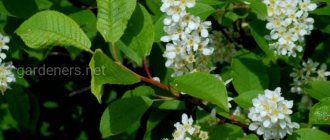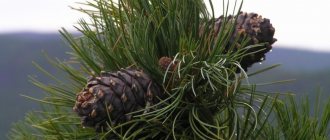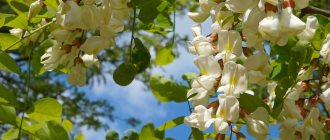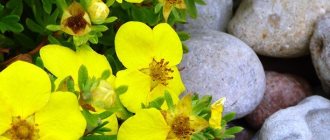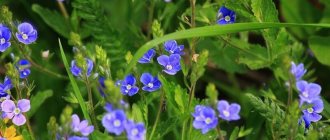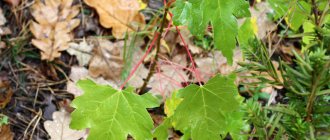The flowering plant nettle (Urtica) is a member of the nettle family. This genus includes more than 50 different species. In the wild, they can be found in temperate regions of both hemispheres. In mid-latitudes, the most common species are stinging nettle (lat. Urtica urens) and stinging nettle (lat. Urtica dioica), which is also called stinging nettle, stinging nettle or stinging nettle. Plants belonging to these species are very valuable medicinal and food raw materials, and chlorophyll is also extracted from them on an industrial scale, which is widely used in the pharmaceutical and perfume industries.
Nettle plant
Nettle is a perennial herbaceous plant of the nettle family. It is widespread in Asia and Europe, Australia and Africa, as well as North America. It can be found in China, India, Japan, Great Britain and the USA.
The plant is popularly called “zhigalka” or “zhiguka”. Regarding the origin of the name of the culture, the opinions of linguists vary. It is believed that the word “nettle” comes from the Old Slavonic kropiva.
The plant has been used by people since ancient times because it contains a large number of useful substances and vitamins. Currently, the properties of nettle are used not only in folk medicine, but also in cosmetology and dietetics. According to experts, there are more than 50 species of nettle in the world. Only a few of them are found on Russian territory.
Growing nettles yourself at home
You can purchase seeds at your nearest pharmacy, at the market, or by ordering online. Many people grow it themselves and make medicines from it. Nettle is a weed plant, but despite this, it requires some effort to grow it.
Choosing a suitable location is the main condition for planting. In this place, the soil should be sandy or fertile, sufficiently moist and in the shade, and no less important, the absence of weeds.
Sowing should be done in late autumn before frost sets in or in the spring after the first snow melts. The seeds should be mixed with dry sand and sown 1.5 cm deep, the distance between sowings is at least 60-70 cm, sprinkled with a small layer of humus or peat on top.
The sowing areas need to be well moistened and the moisture level maintained until you see the first shoots.
They usually appear at the end of spring (April, May), when the air temperature rises to 8 degrees Celsius. Caring for plantings is not difficult. You just need to occasionally moisten the area, loosen the soil and get rid of weeds. To improve the result, you can use natural organic fertilizers.
Castor bean: planting, growing, care and maintenance at home and outdoors (115 photos and videos)Bergenia - tips for properly growing a medicinal plant. Features of collection, application and contraindications (130 photos and videos of planting in the ground)
Cloudberries: beneficial properties, features of cultivation and use. Planting, care and propagation with your own hands (150 photos and videos)
Description of the plant
There are different types of nettles, among them there are dioecious and monoecious representatives. Plant height ranges from 0.5 meters to 2 meters. The edges of the foliage may be jagged or solid. The leaves are located opposite each other.
The stems of the plant can be colored in any shade of green. There are a large number of burning hairs on their surface. Each of them, in fact, is a kind of ampoule with acetylcholine, histamine, serotonin, tartaric, oxalic and formic acids.
When the hairs come into contact with the surface of the human body, the edge of the hair breaks off and gets into the subcutaneous tissue. So the contents of the “ampoule” burn our skin, causing a chemical burn. Substances such as acetylcholine, serotonin and histamine cause severe redness, but oxalic and tartaric acids cause pain. Different types of nettle contain different amounts of these acids. Therefore, the intensity of their effect on the skin is completely different.
Possible contraindications
Despite the undeniable benefits, the cultivated plant can cause harm to the body if the patient does not take into account the contraindications for its use. The first and most important is considered to be a grass allergy. It can appear gradually or suddenly, leading to the appearance of a rash, irritation, and swelling of the mucous membranes of the larynx and pharynx.
There is information about the harmful effects of plant-based products on patients who have a tendency to increased blood clotting. It is contraindicated to use the herb for any acute diseases of the kidneys, liver, heart, or brain. It is allowed to start the course only after the acute symptoms disappear.
A small child may react negatively to nettle products, so its use is only allowed from 12 years of age. The period of pregnancy and lactation will also be a contraindication for use. The condition of the patient’s body plays an important role. For each of them, the dosage and course are different, otherwise complications cannot be avoided.
Diseases of internal organs that are accompanied by bleeding and require urgent surgical intervention are also considered a contraindication for the use of nettle for medicinal purposes. The decision to use medicinal herbs is made only by a doctor.
Types of nettles
As we already mentioned, there are a large number of plant species in the world. In our article we want to focus only on those species that are characteristic of our country. The most common types of nettles in Russia:
- Stinging nettle (Urtica angustifolia).
- Nettle (Urtica angustifolia).
- Hemp nettle (Urtica cannabina).
- Kyiv nettle (Urtica kioviensis).
- Nettle (Urtica galeopsifolia).
- Light green nettle (Urtica laetevirens).
- Ball nettle (Urtica pilulifera).
- Sonden's nettle (Urtica sondenii).
- Nettle (Urtica platyphylla).
- Stinging nettle (Urtica urens).
Stinging nettle
All types of nettles (photos and descriptions are given in the article) are somewhat similar, but at the same time they also have their differences. Stinging nettle is a perennial plant with very developed creeping roots. The height of the crop can reach two meters. In spring, the stems of the plant have a simple structure, but by mid-summer numerous shoots appear in the axils. The plant has a dark green color. Nettle stems are densely covered with stinging fibers. The culture has small inflorescences of pale green color. After flowering, oblong fruits are formed.
Stinging nettle is very common in Eurasia and most of the countries of North Africa, Central Asia and China. In addition, the culture was introduced to Australia and North America. In our country, nettles (species and photos are given in the article) grow in forest and forest-steppe regions, as well as in the Far East and Siberia. The plant is capable of forming huge thickets in wet meadows, on river banks, in vacant lots, along fences and roads.
Nettle or Coleus, houseplant
Gardeners often wonder: which houseplant is similar to nettle? In everyday life you can hear the name “house nettle” instead of “coleus”. This is because coleus leaves are similar to nettles. The shape of the leaf blade in both plants is similar. Coleus foliage has a variety of colors, which cannot be said about nettles, it is only green. When touched, the plant does not sting or irritate the skin.
Coleus is popularly called house nettle.
What does Nettle look like, what family does it belong to?
The houseplant Nettle is a member of the evergreen Lamiaceae genus, and belongs to the Lamiaceae family. The flower is a small bush with several stems. The height of the home plant does not exceed 100 centimeters. The stems are strong with a ribbed structure.
Additional Information! The closest relatives of the indoor nettle flower are mint, basil, and oregano. Unlike its relatives, the flower itself does not smell.
The flowers are small and are of no interest to gardeners. Mostly blue or blue in color.
Coleus house flower during flowering
The main decoration of a flower is its foliage. It amazes the imagination with its shape and color. The leaf blade can be purple, yellow, red, burgundy. Descriptions of the plant say that often the foliage combines all two or even three colors. Each variety has its own unique pattern. These can be stripes, dots, inclusions. The pattern can be either small (barely noticeable) or large (with a clear structure). The edge of the plate is jagged. Leaf length is from 5 to 15 centimeters. The shape can be oval or heart-shaped.
Additional Information! Because of the shape of the leaves, the flower received the popular name “nettle”.
Briefly about the history of appearance
The first mention of the home flower, nettle, can be found in Indian mythology. India is considered the birthplace of nettles. It was in the 19th century that the seeds reached European markets and then spread throughout the world. The first sale was recorded in England. It was very expensive back then. The British were the first to grow the flower at home. In the wild, you can find nettles in the tropical forests of Asia and Africa.
Is it possible to keep it in the house?
There are many myths, legends and superstitions around coleus. Due to the varied colors of the foliage, mystical properties are attributed to the plant. Previously, it was believed that if you keep a flower in the house, it will lead to trouble and misfortune, and will also cause harm to health. If the plant withers and dries up, this means that one of the family members will get sick.
But if a pot of nettles is placed in the office, this will lead to financial growth for the company. If a flower blooms in winter, expect trouble. Some classify him as a muzhegon. It is believed that if a girl has nettles at home, she will never get married and will be lonely until she gets rid of the flower.
For your information! Most horror stories arise from the fact that coleus is often planted on graves. If grown at home, it is believed that it will attract illness and death.
All these signs and superstitions have no scientific proof. It is human nature to attribute our troubles and misfortunes to other people, plants and even objects. If you want to keep a flower in your apartment, then you should not pay attention to signs and superstitions.
Keeping the flower indoors does not have a negative impact on health
Nettle Kyiv
This type of nettle (described below) is found in France, Germany, Poland, Spain and Palestine. In addition, it is extremely common in Russia, Ukraine and Belarus and is even listed in the Red Book in some territories. The perennial plant has herbaceous stems up to 1.2 m high. The leaves are dark green and covered with sparse, but extremely pungent villi.
The inflorescences of the plant contain male and female flowers. Kiev nettle has a long growing season, until the onset of persistent frosts. It prefers wetlands, as well as lowlands along rivers and lakes.
Interesting Facts
A short story about the plant helps to understand why it burns the skin. The reason for this effect is the hairs on the surface of the leaves containing irritating substances. The most interesting facts about nettles:
- Burns received from nettles are quite harmless; they disappear after a few hours without a trace.
- In hot weather, residents of some countries use nettle to preserve the freshness of meat and fish.
- Nettle is unpretentious to environmental conditions, therefore it is found in most countries of the world.
- In some countries (for example, England), the leaves of the plant are used to make special wine.
- Several centuries ago, people believed that this herb was the creation of Perun, who was the patron of the fire element. It was never torn off by hand; only a sharp knife was used.
Nettle is a unique medicinal plant, common in different countries. When used correctly, you can get only benefits from products based on it and cure various diseases, replenish strength and energy.
Ongaonga
Ongaonga (translated from Latin as “fierce nettle”) is also known as the nettle tree. This is the most dangerous type of nettle. It grows exclusively in New Zealand. Only the nettle tree has a woody stem that reaches five meters in height and its thickness reaches 12 centimeters. The thick stem of the plant is incredibly densely covered with stinging fibers. It’s hard to believe, but New Zealanders are afraid of encountering such a tree, because they believe it is one of the most dangerous types of nettles. The fact is that accidental encounters with such a plant cause breathing difficulties, weakened vision and temporary paralysis of the muscular system. There is even a known case of death.
Imagine that every year about 75 people need serious hospital treatment after an encounter with such a “monster”. Only one fatality was officially recorded, in 1962, when two young men accidentally fell into nettle thickets and received multiple burns on their legs and arms. One of them had paralyzed leg muscles within an hour, difficulty breathing and loss of vision. He was urgently hospitalized, but five hours later he was dead. Doctors managed to save the second patient. Since then, local residents have been trying to avoid one of the dangerous and stinging types of nettle on the tenth road. But, unfortunately, it is not always possible to avoid unpleasant encounters. People who have received burns feel signs of illness for two to three days, after which they recover.
The tree-like trunk of such a tree sometimes grows up to five meters. But more often the plant forms two-meter thickets. The leaves and stems of such nettles (types and photos are given during the article) are completely covered with white, very poisonous spines, which reach a length of six millimeters. Each such spike inside is filled with histamine and formic acid. At the slightest contact with anything, the spines break and toxins enter the skin, causing severe burns and sharp throbbing pain.
The nettle tree has caused considerable harm to the people of New Zealand. Because of him, a considerable number of dogs and horses died. It remains a mystery why a plant should have such an impressive defense mechanism in the complete absence of enemies?
However, it turned out that Ongaonga is not such an invulnerable “monster”. There is an insect that is not at all afraid of wood burns. The larvae of the butterfly with the beautiful name Red Admiral are not only not afraid of dangerous toxins, they feed exclusively on the foliage of the nettle tree.
Application area
Decoctions, alcohol and water infusions, and ointments are prepared based on the leaves, stems, seeds, and small flowers of nettle. In addition, freshly squeezed juice or pulp from the leaves is used to speed up the healing of wounds and cracks. abrasions and cuts, trophic ulcers.
Depending on the disease, a specific recipe is chosen. Each is different and used for different conditions. Do not forget about the use of nettles in cooking. Its leaves are often used to prepare soups, borscht and other dishes. Only connoisseurs will be able to understand the taste of this plant.
Other parts of the herb are used in the production of cosmetics, household chemicals, and perfumes. However, nettle became most famous after the discovery of its medicinal properties. Man began to prepare healing remedies to eliminate the symptoms of certain diseases. The main indications for using the plant are the following:
- weakened immunity, frequent colds and viral diseases;
- tendency to bleed;
- infertility in women and men, dysfunction of the reproductive system;
- disorders of the digestive system;
- kidney and bladder diseases;
- oncological diseases;
- dermatological pathologies accompanied by the appearance of rash and irritation;
- trophic ulcers on the lower extremities, formed as a result of disorders of the vascular system;
- heart and brain diseases;
- arthritis, arthrosis, gout, rheumatism.
In addition, nettle has mucolytic properties, that is, it helps to liquefy and remove mucus from the bronchi and lungs. This allows it to be used for diseases of the respiratory system.
Useful properties of the plant
It is difficult for people far from botany to discern the differences between the types of nettles (photos and descriptions of some varieties are given in the article). Whatever variety of this group of plants we are talking about, the only important fact is that all representatives of the extensive family have incredibly beneficial properties. Nettle contains phytoncides, tannins and phenolic acids. Also found in small quantities are: bata-carotene, folic acid, vitamin H, choline, vitamin E and iodine.
Essential oils, porphrin, sirotitnin, phenocarbolic and pantothenic acids, histamine, and flavonoids were found in the foliage and stems of the plant. Even the seeds of the plant contain vitamin C and linoleic acid.
The high content of vitamin C in nettle explains its rather strong preventive effect and strengthening properties. Vitamin K relieves inflammation and improves blood clotting. But the high content of B vitamins allows the culture to be used in the fight against diseases of the nervous system. Phosphorus and calcium have a beneficial effect on the condition of teeth and nails, and magnesium and potassium contribute to the proper functioning of the heart and blood vessels. Due to the high iron content in nettle, the plant is used in the treatment of anemia. In addition, nettle helps in the fight against diabetes, since secretin reduces sugar levels in the circulatory system, as well as the effects of radioactive radiation.
Properties of nettle: harm and benefit
Healing properties
Nettle leaves contain vitamins A, H, C, E and K, B1, B2, B4, B5, B6, B9, niacin, macroelements chlorine, calcium, potassium, magnesium, phosphorus, sodium, trace elements copper, barium, aluminum, molybdenum, iron, zinc, selenium and manganese. Lemon contains a couple of times less ascorbic acid than nettle. Moreover, the amount of vitamin A in this plant is slightly greater than in sea buckthorn, carrots, spinach and sorrel. This plant also contains tannins, phytoncides, chlorophyll, flavonoids and organic acids - gallusic and formic.
The foliage has a hypoglycemic and hemostatic effect, and it also fights inflammation. The leaves also help increase hemoglobin levels, uterine tone and the number of red blood cells in the blood. These healing raw materials are used to treat diseases of the bladder and liver, anemia, radiculitis, pulmonary tuberculosis, rheumatism and metabolic disorders in the body. Nettle has also proven to be highly effective in the treatment of non-infectious chronic prostatitis and prostate adenoma.
In alternative medicine there are recipes for remedies that have a laxative, diuretic, anticonvulsant, wound-healing, expectorant and restorative effect. If you use the foliage of this plant systematically, you can quickly get rid of small wounds and ulcers, while nettle infusion, used as baths, compresses and lotions, can save hair from loss. Since ancient times, this plant has been used to treat hair. To do this, you need to combine 200 ml of just boiled water with 2 or 3 large spoons of dried leaves, after 1 hour, strain the infusion. Nettle infusion can be used for the same purpose. To prepare it, you need to combine 1 tbsp. water, 1 large spoon of dried crushed rhizome and the same amount of dry foliage. Boil the mixture for 30 minutes and then cool slightly. It should be rubbed into the scalp, but there is no need to wash your hair afterwards; just lightly dry it with a towel.
This plant is also used to create a nutrient mixture that is recommended for feeding tomatoes. To do this, healthy leaf blades and shoots must be cut off before seeds form. Take a large container and fill it with nettles, which are mixed with the remains of baked goods. As a result, the container should only be ¾ full. Then water is added to the mixture, in which the yeast must be dissolved, but the intended level cannot be exceeded. Place the container in a sunny place for 3–5 days, which will allow the mixture to ferment, but do not forget to stir it systematically. Tomatoes should be fed with this mixture once every 7 days.
Nettle soup is very popular. Pour olive oil into a frying pan and simmer nettle leaves and white onions in it for 7 minutes. Salt the water and boil the potatoes in it, from which you prepare mashed potatoes using a blender. In this case, the container with potatoes is not removed from low heat and cream, cow’s butter and milk are gradually introduced into the puree. At the end you should add the onion with nettle leaves and mix everything at low speed. You can add grated Gaudi cheese or sour cream to the soup, poured into bowls. For 1.5 kg of potato tubers, take 0.5 liters of milk, 0.3 liters of cream, 2 small spoons of cow butter, and a bunch of fresh nettles. The remaining ingredients are added to taste.
Nettle - medicinal properties
Healing properties
Nettle is considered a real storehouse of healing properties. The main ones are the ability to restore blood, choleretic and diuretic effects, restoration of the mucous surface of the gastrointestinal tract, normalization of the menstrual cycle, etc.
In the West, the plant is even used to treat tumors. It has also been proven that nettle relieves cramps and has a good expectorant effect. The grass contains a large amount of chlorophyll, which helps normalize the functioning of the female organs and the entire intestines. Experiments have proven that nettle normalizes hemoglobin levels in the blood and has a positive effect on carbohydrate metabolism.
For a long time, nettle seeds were prescribed to women who could not get pregnant. The plant has even found use as a remedy for impotence. To do this, it is recommended to mix the seeds with banana pulp and use the product daily until libido is restored.
Freshly squeezed juice from the seeds and leaves of nettle helps in the fight against osteomyelitis, and is also used for high levels of salts in the joints. The juice is very effective for treating ulcerative wounds with varicose veins, it heals cuts and diaper rash. The diuretic properties of the plant are used for kidney stones and rheumatism. Nettle oil helps well in the treatment of bruises, arthritis, osteochondrosis and sprains. At home, people often add leaves to vitamin drinks.
Nettle recipes
In addition to the medicinal properties that are manifested in the use of infusions, decoctions and teas, this plant is very well used in cooking. Of course, the most popular and widely known dish is nettle cabbage soup. However, other equally tasty and healthy dishes can be prepared from this plant.
Young nettle salad with kefir
We collect fresh young leaves and chop them finely. For the salad you will need one glass of nettle. A bunch of fresh green onions, which we also chop finely, will also come in handy. Next, boil one chicken egg and put a glass of kefir. The ingredients are ready, let's make the salad.
Mix with onions, place in a deep plate and pour in kefir. Cut the egg into rings and place it on top. Salad ready.
For breakfast, a sandwich with nettles
You will need dry leaves that need to be ground into powder. If you do not have any, you can purchase such powder at the pharmacy. Mix dry leaves with butter in a 1:1 ratio. As a result, we get a kind of nettle oil that can be spread on bread or a loaf.
Classic nettle soup or nettle cabbage soup
To prepare cabbage soup we take:
Young nettle – any quantity (up to 100 g).
- Egg – 1 pc.
- Carrots – 1 pc.
- Onion – 1 pc.
- Potatoes – 4 pcs.
Prepare cabbage soup as follows. Nettle is doused with boiling water and chopped. Place a saucepan on the fire and pour in water. You can also use meat broth. Bring the water to a boil and add the diced potatoes. Cook for 10 minutes and add onions and carrots, which we cut into rings. Cook for about five minutes, then add the nettles. Add salt to taste and cook for about 3 minutes. At the end of cooking, pour the soup into bowls, add half a boiled egg, sour cream and serve.
Dangerous properties of the plant
No matter how useful nettle is, it is always worth remembering that it causes burns to the skin, which means you need to be careful with it. For most people, the burns go away quickly, but some may experience dangerous allergic reactions.
In addition, not everyone can take advantage of the beneficial properties of the plant. It should not be used as a remedy:
- With high blood clotting (this can lead to the formation of blood clots).
- In case of heart or kidney failure.
- For skin allergies and individual intolerances.
- During pregnancy.
- For female bleeding.
Nettle for women after 50 years
For women over 50, there are no special indications or contraindications, with the exception of an allergic reaction. The most useful application is to use it to strengthen hair.
It is best to use a fresh decoction for each procedure. Therefore, to prepare one serving of this decoction, take 100 g of fresh leaves. Take a pan, put the leaves in it and fill it with a liter of a mixture of water and vinegar in a 1:1 ratio. Place the pan on the fire, bring to a boil and simmer for several minutes.
The procedure is carried out within a month. After which a break is taken for a couple of weeks, then the procedure is repeated.
It is useful to drink fresh juice regularly. This helps keep the body in a vigorous state and improve immunity. The leaves are best used when nettles are in bloom. Take a teaspoon of juice three times a day.
It is also not recommended for use by those who have severe thrombophlebitis and varicose veins.
Decoctions help improve memory. To prevent sclerosis, for example, an alcohol tincture of fresh shoots is used. Several nettle shoots are poured with 500 ml of alcohol or vodka and infused in the dark for about a week. Take a teaspoon of tincture twice a day - before breakfast and bedtime.
